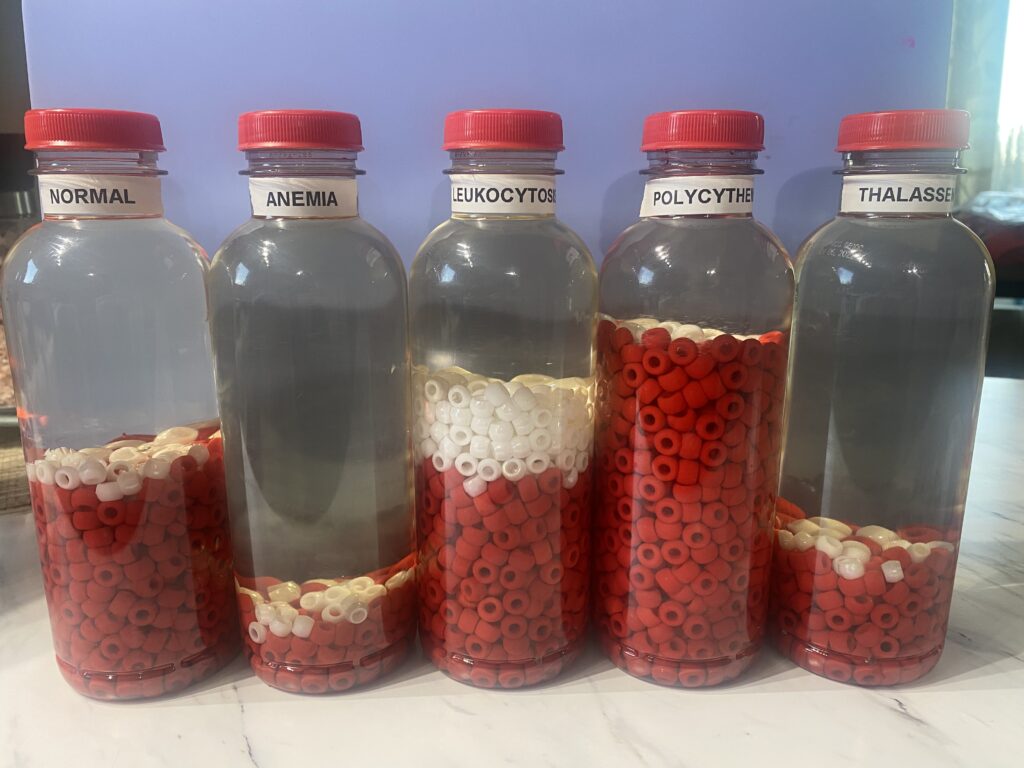For my STEAM project, I decided to further my knowledge of blood diseases by visually constructing a large-size version of what the blood disease components look like inside of the body. My project is able to display the amount of red and white blood cells in each blood disease. I have looked at and studied four different types of blood: Anemia, High WBC Count, Polycythemia, and Thalassemias.


This was a really creative way of showing the blood cells. I wouldn’t have thought of this. Good job!
Jenna’s STEAM project goal was to “describe blood disorders and how they can be treated.” She chose to focus on blood diseases, specifically anemia, leukocytosis, polycythemia, and thalassemia. She was able to successfully represent the impact of these various diseases on red and white blood cell counts by filling bottles with varying amounts of red and white beads; red beads represented erythrocytes (red blood cells), and white beads represented leukocytes (white blood cells). The first jar represents a normal blood count, with a high percentage of erythrocytes (99%) and a low percentage of leukocytes (1%). The bottle representing anemia contains significantly fewer erythrocytes, showing hemoglobin deficiency. Leukocytosis is characterized by an elevated white blood cell count. Polycythemia is represented by an elevated red blood cell count, showing an elevated hematocrit. Thalassemia is also represented by fewer red blood cells.